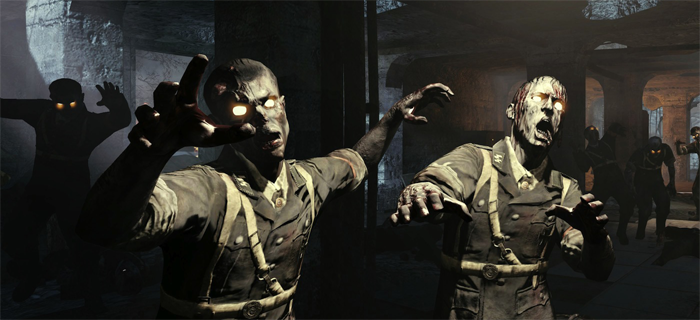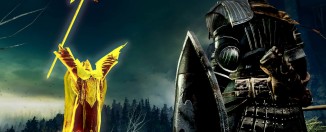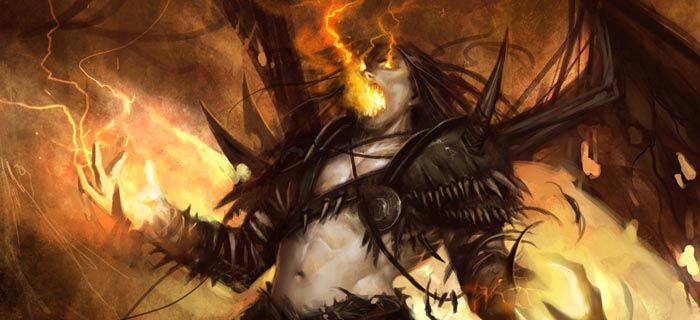Call of Duty Zombies: Story in Co-Op
One of my earliest articles on TopTierTactics was about story in multiplayer games, dealing specifically with Team Fortress 2. At the time, TF2 was just beginning to get its own comic strips and a coherent canon. Games like Blacklight: Tango Down were experimenting with in-built storylines uncovered through play, with varying success. I wasn’t aware of it at the time, but Treyarch was also hard at work building their own multiplayer fiction outside the single player space.
In the post-apocalypse of their Zombies mode, they were creating a grand narrative in the vein of Left 4 Dead, but with a more supernatural bent. Where Valve was more interested in the human repercussions of a zombie apocalypse, Treyarch had more outlandish, though no less interesting, ideas.
Where we’ve been
For those of you unaware, or who don’t really care, Nazi Zombies first appeared as a not-too-well-hidden easter egg at the end of Call of Duty: World at War. The map, Nocht der Untoten, was simplistic, small, and deadly. My feeling is a small team had some time on their hands after the completion of the single player and decided to put the mode together. The powers that be at both Treyarch and Activision thought it a novel enough idea to allow it entry into the game. Whether they expected the subsequent explosion of fan response I can’t say, but they got it.
World at War received several more studio built zombie maps, as well as an eclectic cast of characters that included a former US Marine, a Japanese Imperial soldier, a drunk Russian soldier, and an insane German scientist. Each was humorously written, and this writing only got better with each new map.
With the release of mod tools for World at War, fans created an ever-increasing number of zombies maps, modes, and weapon choices. There are plenty to choose from already, and I’d imagine there are plenty still being churned out today.
From tiny add-on to full-blown feature
Some fans demand Treyarch stop trying to make a standard multiplayer Call of Duty and put their full efforts behind zombies. While they haven’t gone that route, with the original Black Ops, it became clear that zombies was a large part of Treyarch’s Call of Duty effort. Hints dropped in World at War of the underlying story behind this alternate world became, over the course of Blops’s DLC cycle, a four part narrative. The four men found themselves in each new map only by solving a complicated and unannounced easter egg accomplished in the previous map.
Giving the players a reason to care
It’s these easter eggs that interest me the most. In my early article, I ask why we don’t take time to admire the thought and care that goes into creating a multiplayer map. Sure that skybox looks nice, and there’s lots of bright colors, but I want to shoot people in it, not look around and make googley eyes at the scenery.
In the zombies mode, however, if you want to uncover the story behind the characters’ presence in that location, you have to take a magnifying glass to the surroundings. Players have what I’ll term texture-level paranoia. In essence, every texture in the map, down to the smallest model, might have some clue about the story or to the next step of the easter egg. Large groups of players, on YouTube and otherwise, take hours to comb new maps for these clues, and are rewarded for their efforts with audio snippets and dialogues that often raise more questions than give answers.
At the end of the first Black Ops’s DLC cycle, the narrative of the four original characters ended, and the story seemed complete. Many questions were in fact answered, and the conclusion was devastating enough to seem final. Now Treyarch has four new characters, survivors of the last cataclysm from Black Ops. Despite an almost complete reboot, the easter egg model remains, and as far as I can tell, is more tied to the story of zombies than ever before.
Building fiction in stages
What Valve and the zombies team and Treyarch have in common is the understanding that you can’t simply hit your players with a load of information they didn’t need or care about, at least from the start. You have to build curiosity first. In Team Fortress 2, for years all we knew was the existence of Teams Red and Blu, their animosity towards each other, the ever-present Announcer, and that both teams used farm and construction equipment to hide doomsday devices. We did know of a figure called Saxton Hale, and came to understand him as the arms dealer supplying both teams. Beyond that, we didn’t have much.
Then the WAR! comic came out, and we wanted to know everything there was to know about the world of TF2, because we were invested in it both through play and small hints of an extended canon.
Treyarch took the same approach. Some interesting ideas in World at War zombies that got us guessing and got us hooked. Then Black Ops got people invested. Now in Black Ops 2, we want to know where this new story’s going, and whether its ending will be as spectacular.
Why should you care?
I think that answer is simple. As game publishers focus more and more on multiplayer and co-op, we seem to be losing the great single player epics of the past. What developers like Valve and Treyarch’s zombies team show me is hope for fiction built into play, rather than play wrapped around fiction. Single player campaigns are stories in which we play the center role, where events revolve around us and affect our character in game.
If game narrative shifts instead to being built into the world, both physically and experientially, I think we’re going places. Valve of course knew about this when they built Half-Life, and other designers are picking up the torch as well. I don’t want to see the disappearance of the long single-player game, but if we must lose it, having story in our multiplayer and co-op games just might make up for it.







